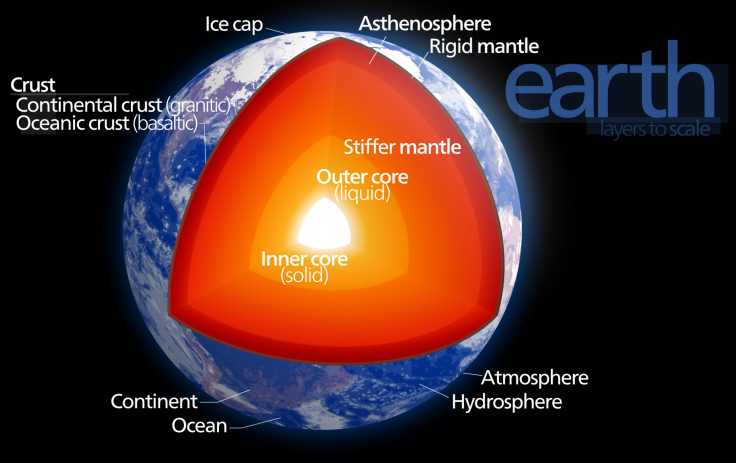Was Earth’s Core Formed Like A Pot Of Coffee? Researchers Unravel The Mystery Of Earth’s Neat Layers

Researchers attempting to unravel the mystery of the Earth’s core are reconsidering a theory that had been previously ruled out. Percolation, much like in the coffee-brewing process, may in fact explain the ordered nature of Earth’s formation.
The core of the Earth contains an inner layer, an iron-rich solid ball, and an outer layer, of liquid iron and nickel, with a mantle of silicate. This layering is a mystery that researchers from Stanford University, led by Wendy Mao, are hoping to solve -- easier said than done.
According to the researchers, prior to settling into orderly layers, Earth’s creation -- around 4.5 billion years ago, just after the creation Sun and our solar system -- was chaotic as bodies of rock and metal would crash, melt and form new bodies.
How these layers formed so neatly amid the chaos has been a mystery to scientists, but percolation is one theory that could explain it. According to the Stanford researchers, iron would filter downward through the silicate, similar to how water filters through coffee grinds, joining up with the other molten iron that was forming the inner core of the Earth.
This theory was meant to serve as an alternative solution to an earlier theory that the layers formed as a result of intense heat, due to the collisions. This heat would have melted rock and iron, creating a “magma ocean,” and eventually everything would settle into different layers due to the different densities. The problem with the theory is the incredible amount of heat it suggests, which is why many researchers believed in percolation as one other possible explanation.
But there are problems with that, too, as researchers discovered molten iron, in the upper mantle, would form independent spheres, and they would not interact with other iron spheres. “In order for percolation to be efficient, the molten iron needs to be able to form continuous channels through the solid,” said Mao in a statement.
Now, new experiments led by Mao have revived the possibility that percolation could explain the formation of the Earth’s core. Mao created a tiny sample of molten silicate and iron, squeezed these together between two diamonds, and heated the samples using a laser. This process mimicked the incredible pressure and heat within the interior of the Earth and confirmed that molten iron would form isolated spheres but gave new hope to the percolation theory.
Mao’s research discovered that, through the pressure and heat that would have been present, the structure of silicate was different and the isolated iron spheres could allow for interaction, creating the network necessary for percolation. “Scientists had said this theory wasn’t possible, but now we’re saying, under certain conditions that we know exist in the planet, it could happen,” said Mao.
As noted by the researchers, the percolation theory and the magma ocean theory could have occurred simultaneously. Future research could determine if one mechanism occurred first or the two could have occurred at the same time. Mao’s research was published in the journal Nature Geoscience.
© Copyright IBTimes 2025. All rights reserved.






















